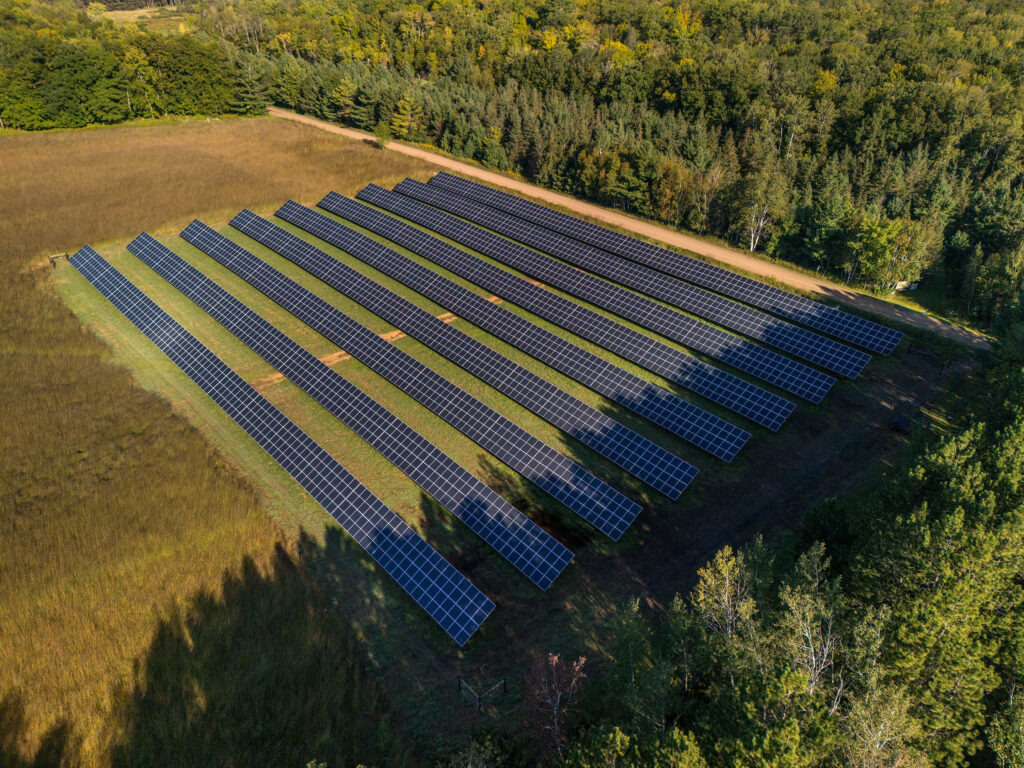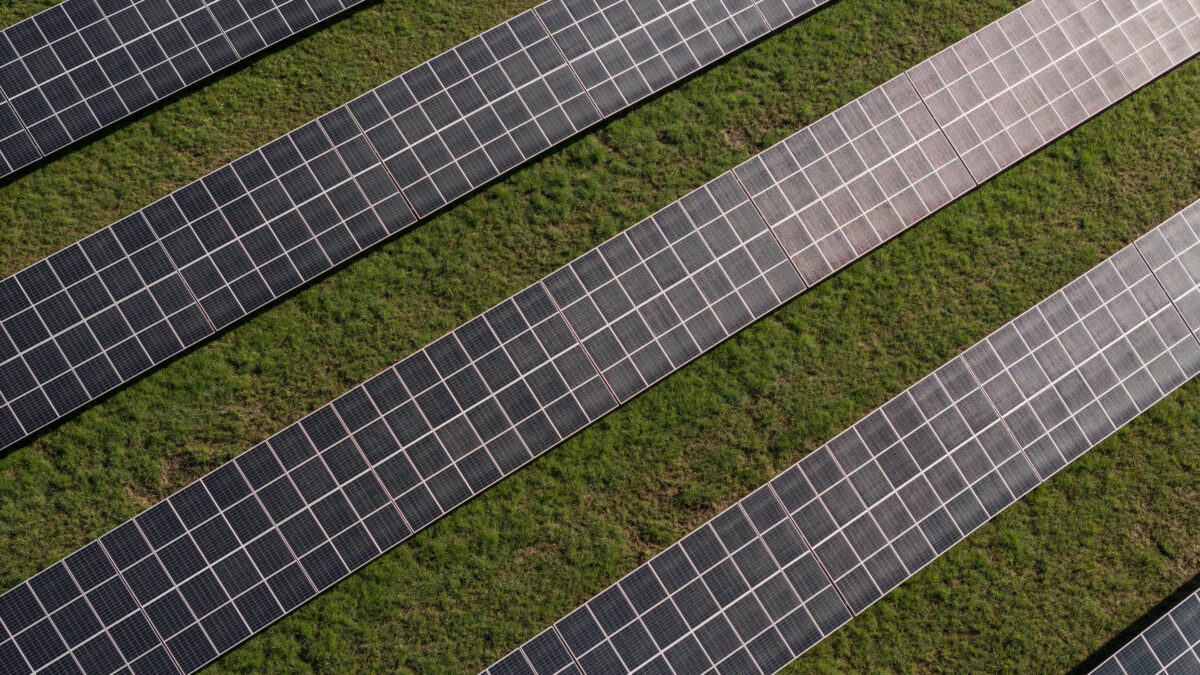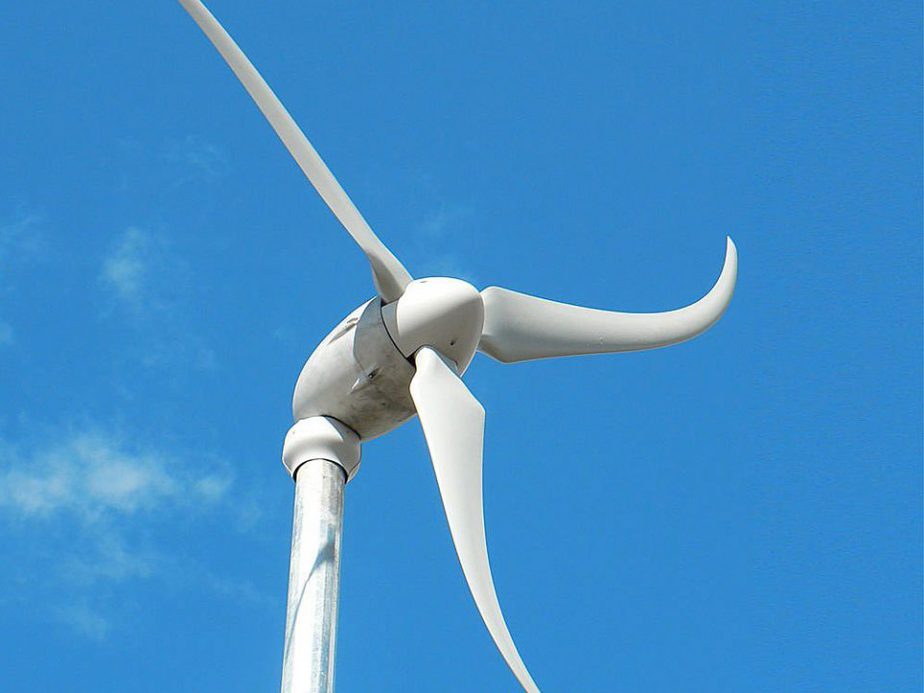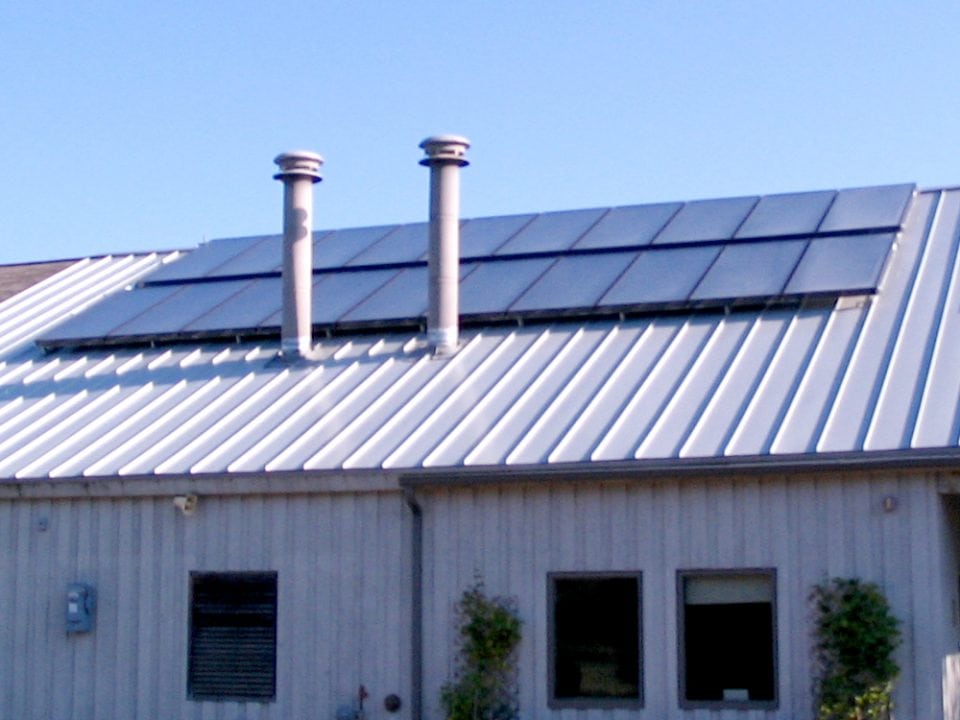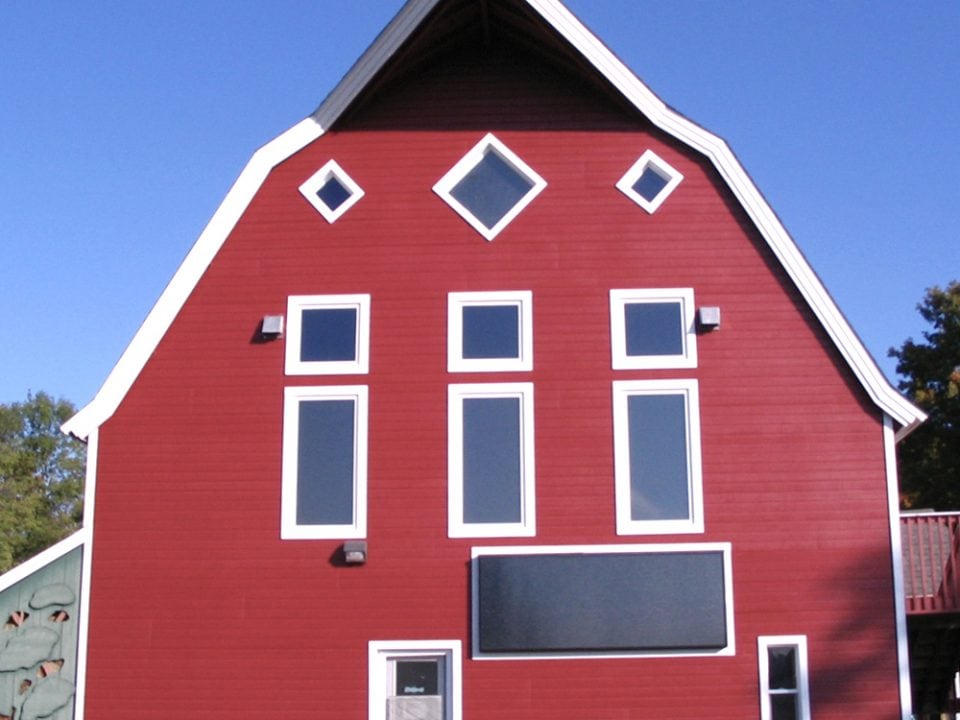Solar Power at Osprey Wilds
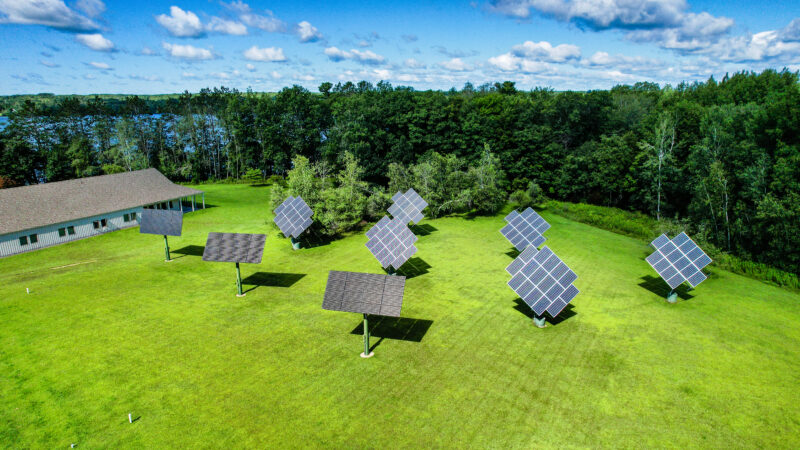
Dual Tracking Solar Arrays
2005 – Initial Installation
Our first installation of photovoltaic (PV) technology here at Osprey Wilds was 3 solar arrays (towers) in 2005. The acquisition of these arrays was made possible through funding received from the Department of Housing & Urban Development and East Central Energy. Solar rebates from the State of Minnesota were also utilized to help offset the purchase of these arrays for this initial installation.
Each of the solar arrays in this initial installation is composed of sixteen PV panels. Each individual PV panel measures 31” x 63”, weighs 33 pounds and generates 175 watts (W) per hour (during sunlight hours). Therefore, each array generates 2,800 W/hr or 2.8 kWH, and in combination, three of these arrays produce 8.4 kWH. Our solar arrays have motors that allow them to track the path of the sun as it moves across the sky to achieve the optimum angle possible for electricity production. This tracking ability increases the efficiency of our arrays up to 33% and is an important feature in areas with less than optimal sunlight intensity, such as Minnesota.
2011 – Phase Two
In 2011, a second phase of PV arrays was installed, made possible through funding received from the US Department of Energy (DOE). This 23.1 kW expansion of our solar energy capacity was designed by Innovative Power Systems (St. Paul, MN) and installed by Blue Horizon Energy (Eden Prairie, MN). This second PV system added six dual-tracking PV arrays, each with sixteen 240-watt Samsung® panels.
These arrays differ from our first three arrays (above) not only in efficiency and greater capacity, but also in their sun tracking ability — they allow more accurate alignment as the Sun’s position shifts with the seasons. The tracking motors in this system also have better cold-weather mechanisms that prevent malfunction in extreme cold temperature.
The electricity produced by our 9 PV arrays is tied into our electric grid and is supplies power for Crosby Lodge. Combined, our 9 PV arrays produce an average of about 52 megawatts (MW) annually. According to the U.S. Department of Energy, in 2011 the average U.S. home consumed 11,28 kW, or 11.28 MW, annually. Therefore, these nine arrays produce enough energy to power about 4.6 typical American households.
Based on EPC emissions estimates, producing the same amount of electricity from coal annually emits about 117,000 pounds of carbon dioxide, 676 pounds of sulfur dioxide and 311 pounds of nitrogen oxide. Preventing this much carbon dioxide from being released to the atmosphere is equivalent to adding 2,400 mature trees to our forests.
2024 Solar Prairie Project
In 2024, Osprey Wilds partnered with East Central Energy and Soltek to build a 3-acre 716 kW photovoltaic system that produces clean, zero-emission electricity through mounted solar panels. This project was years in the making as a part of Osprey Wilds’ goal to reduce its carbon footprint and invest in carbon-neutral, sustainable energy systems.
When creating a conservation easement with the Minnesota Land Trust in 2021, Osprey Wilds made a 3-acre exemption in the prairie to allow for a future solar photovoltaic system that could produce enough electricity for the entire campus. The prairie site was selected as it is one of the first things visitors see when they arrive at Osprey Wilds, therefore making the photovoltaic system a physical and visual demonstration to our environmental commitment and values. This is the largest solar photovoltaic system of any nature center or residential environmental learning center (RELC) in Minnesota.
The 3-acre system produces 1,000,000 kWh of electricity annually, which is more than three times Osprey Wilds’ current electricity needs. This excess allows for future carbon-neutral campus expansions. Why do this when Minnesota will be 100% clean electricity by 2040 anyway? Climate change is an existential threat to the planet and 2040 is 16 years away. Because of this project, Osprey Wilds has already stopped contributing greenhouse gases into the atmosphere and will continue doing so for the next 16 years and beyond. These arrays also provide financial security with a fixed electric rate for the next 30 years.
